A new London exhibition aims to bring female African artists into the mainstream
A display of 32 artworks at the House of Fine Art (HOFA) Gallery in London, running through August, aims to showcase the range and power of young, up-and-coming female artists from Africa, or of African descent, in an effort to bring more of their work into the mainstream.
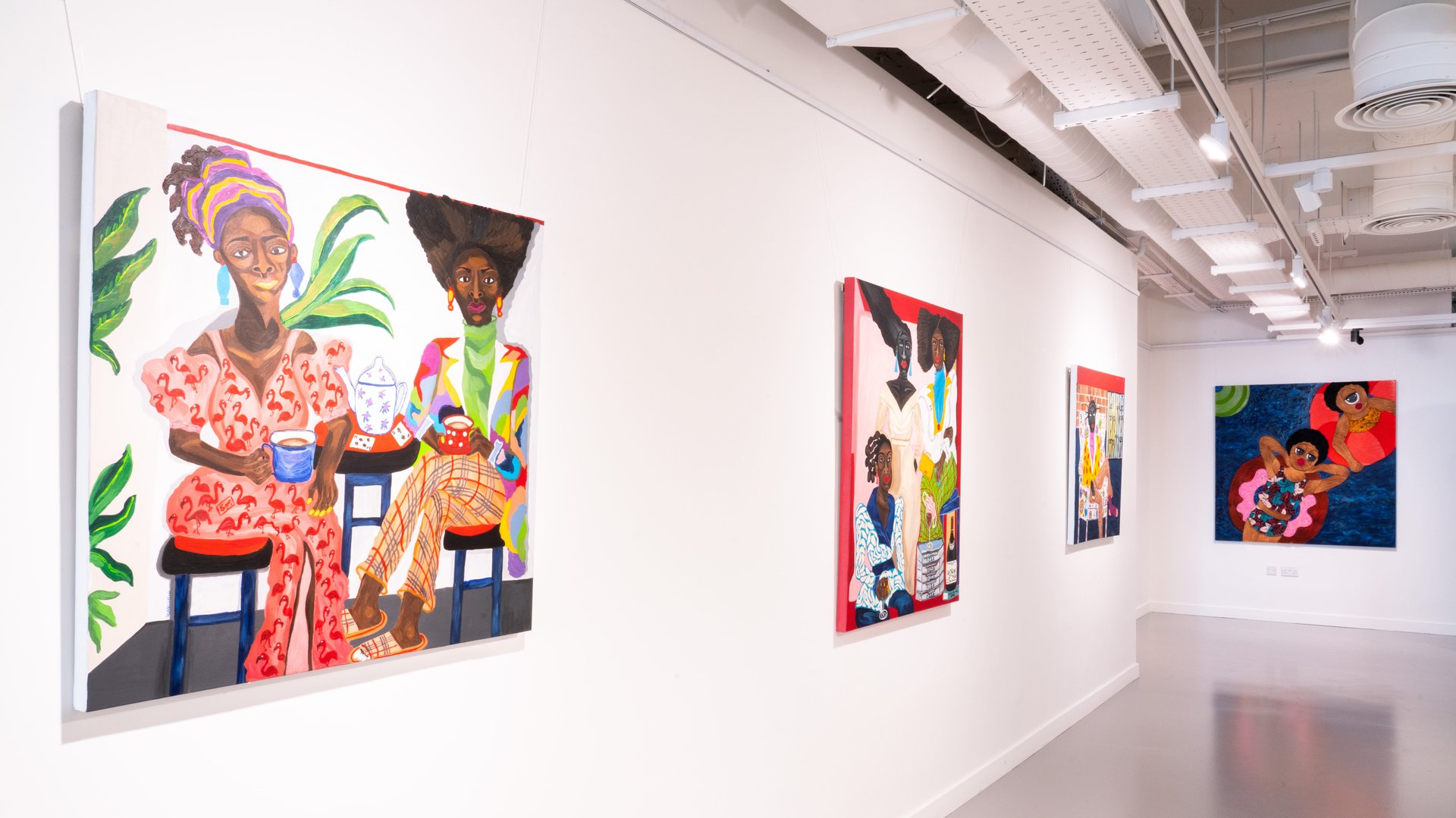

A display of 32 artworks at the House of Fine Art (HOFA) Gallery in London, running through August, aims to showcase the range and power of young, up-and-coming female artists from Africa, or of African descent, in an effort to bring more of their work into the mainstream.
“Mother of Mankind” features 16 artists and is curated by Ghanaian-British gallerist Adora Mba, founder of recently opened ADA \ Contemporary Art Gallery in Accra. Mba describes the show as an “artistic call to arms” which she was inspired to do after seeing a series of group exhibitions featuring the same male African artists. “There’s an incredible roster of female artists, contemporary artists, doing really cool stuff, and it needs to be seen,” she says.”I really just wanted the world to see that African art is more than portraiture from male painters.”
The show is the fifth in a series from HOFA titled “Curated,” which invites young curators from across the world to highlight the work of their favorite artists. “We have the privilege of having a successful gallery in the heart of Mayfair which gives this groundbreaking exhibition the platform to engage a wider audience, ensuring that each artist and artwork is given the exposure it deserves,” says HOFA co-founder Simonida Pavicevic. “With the present topical conversations that are at the forefront of an important change in how society evolves, we feel it is important to be a part of this movement.”
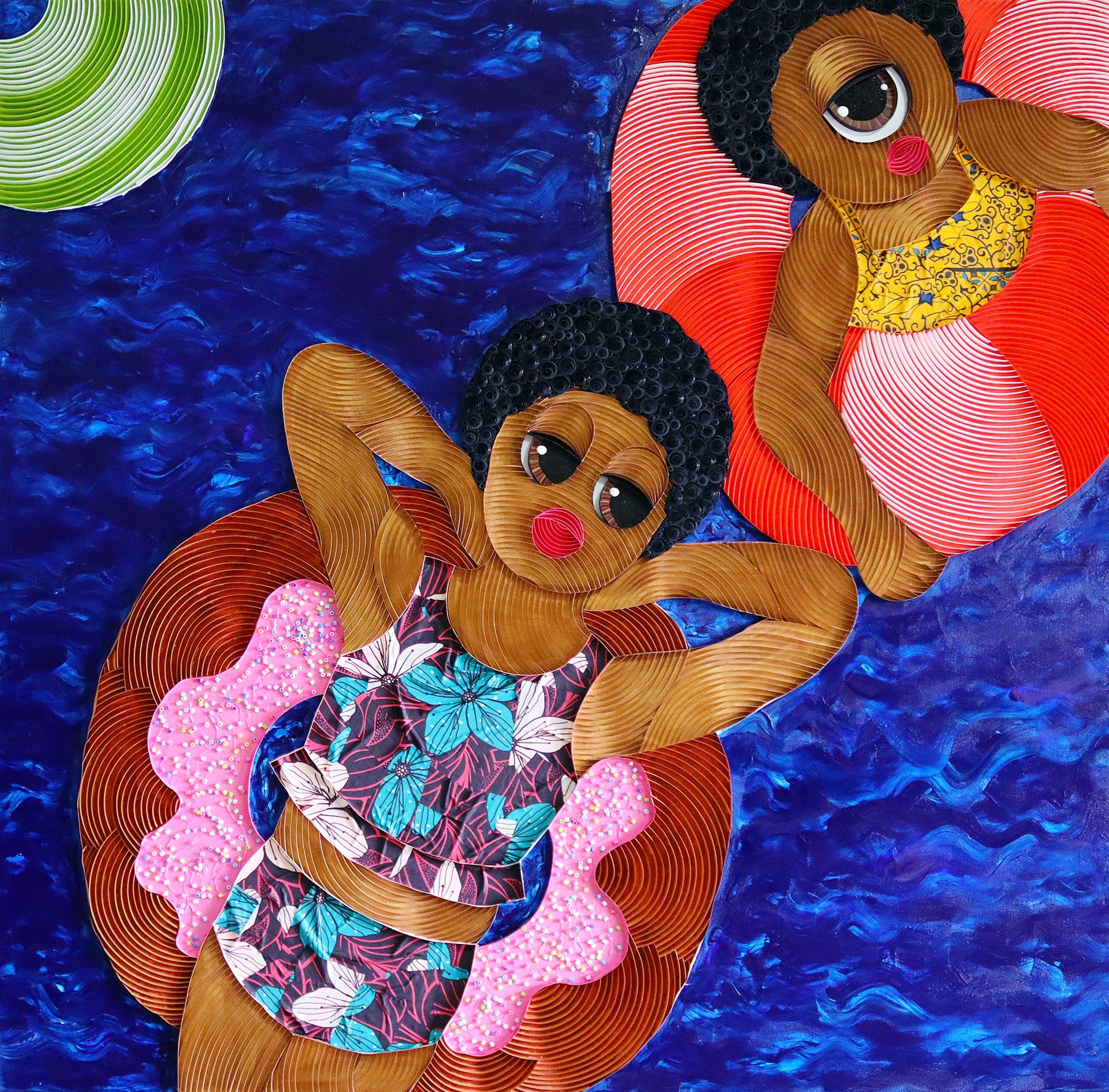
The result is a collection of works that help the reader peer into the lives, dreams, and imaginations of African women. Some of these images position the viewer from above, allowing them to look onto scenes of women braiding each other’s hair, or lounging in a pool. Others position the women directly in front of the viewer, even staring at them, as they drink tea, or get ready for a night out.
“In Western art, people are used to seeing very normal depictions, it’s not strange or otherworldly,” says Mba. “I think that’s what the artists are showing. We chill, we swim, we do our hair. The experiences are unique to us as Black women…but it’s showing that we, like everyone else, live our lives and do these mundane things.”
Mba says she faced multiple logistical Covid-related delays in putting the exhibition together, from logistical challenges in transporting the art, to reservation on the part of gallerists, which she puts down to the business pressures brought on by the pandemic.
But seeing the collection as a whole, for the first time, she said she was struck by how some of the paintings were bigger and bolder than she had imagined, from the vibrancy and light of Homegirls I and II, by Nigeria’s Damilola Marcus, which depicts two young girls enjoying each other’s company, to the eye-popping colors of Serena by Texas-born artist Chinaza Agbor, in which a pink-eyed woman turns to look at the viewer with a glimmer in her eye, braids twirling around her face, surrounded by an orange halo.
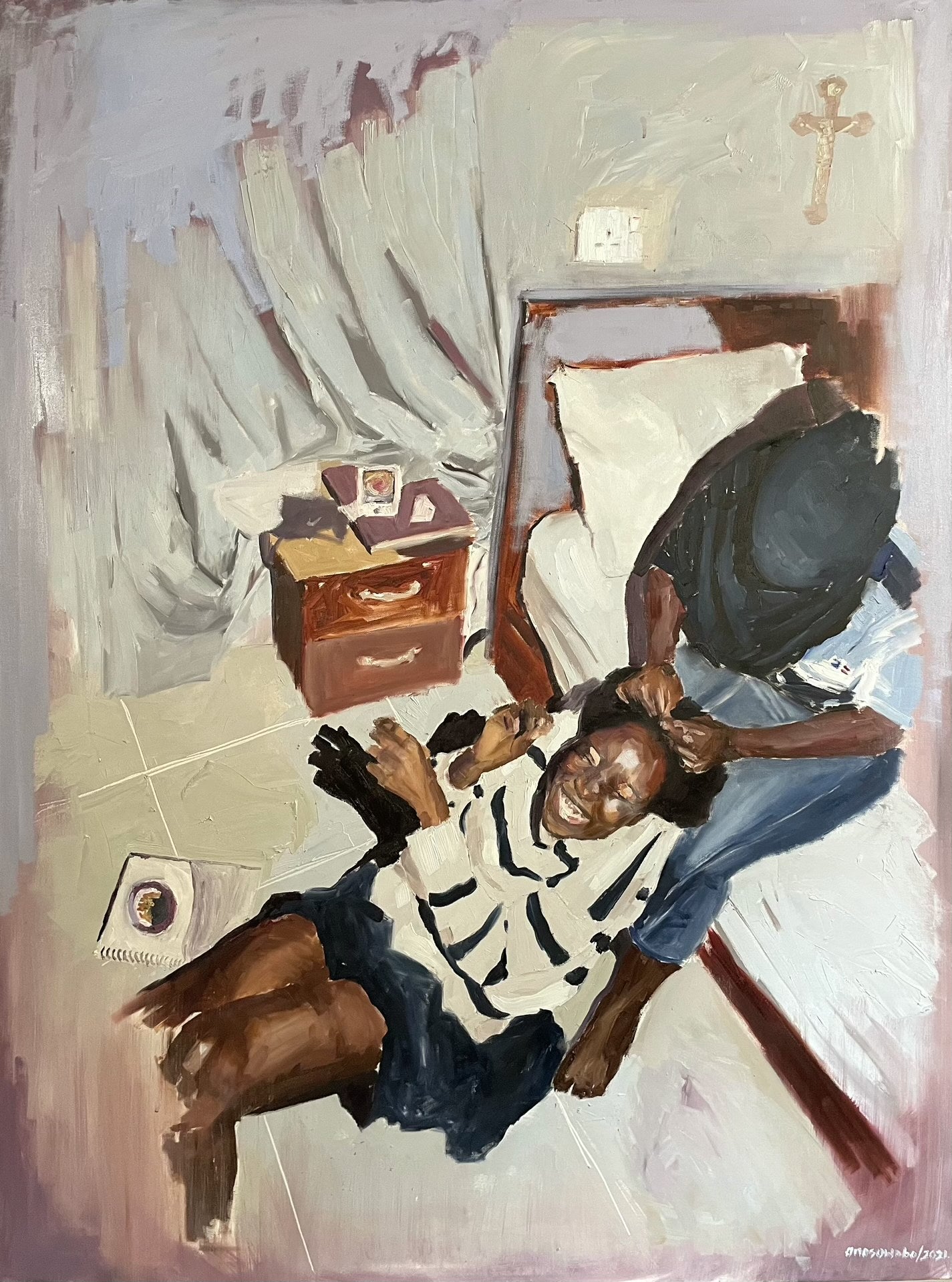
Close by in the gallery hangs a large painting by Emma Prempeh, a British artist of Ghanaian and Venetian heritage, portraying her grandmother in a dress detailed with leaves, standing next to a ghostly self-portrait of the artist with her hand on her grandmother’s shoulder. Done in hues of black, brown, and gold, the painting features a scattering of scratched phrases. Prempeh never met her Ghanaian grandmother, Mba says, and the painting and phrases references questions she might have asked if she had, including: “How do you cope with your bad days?”
Mba’s art gallery hosts Prempeh as an artist-in-residence this year.
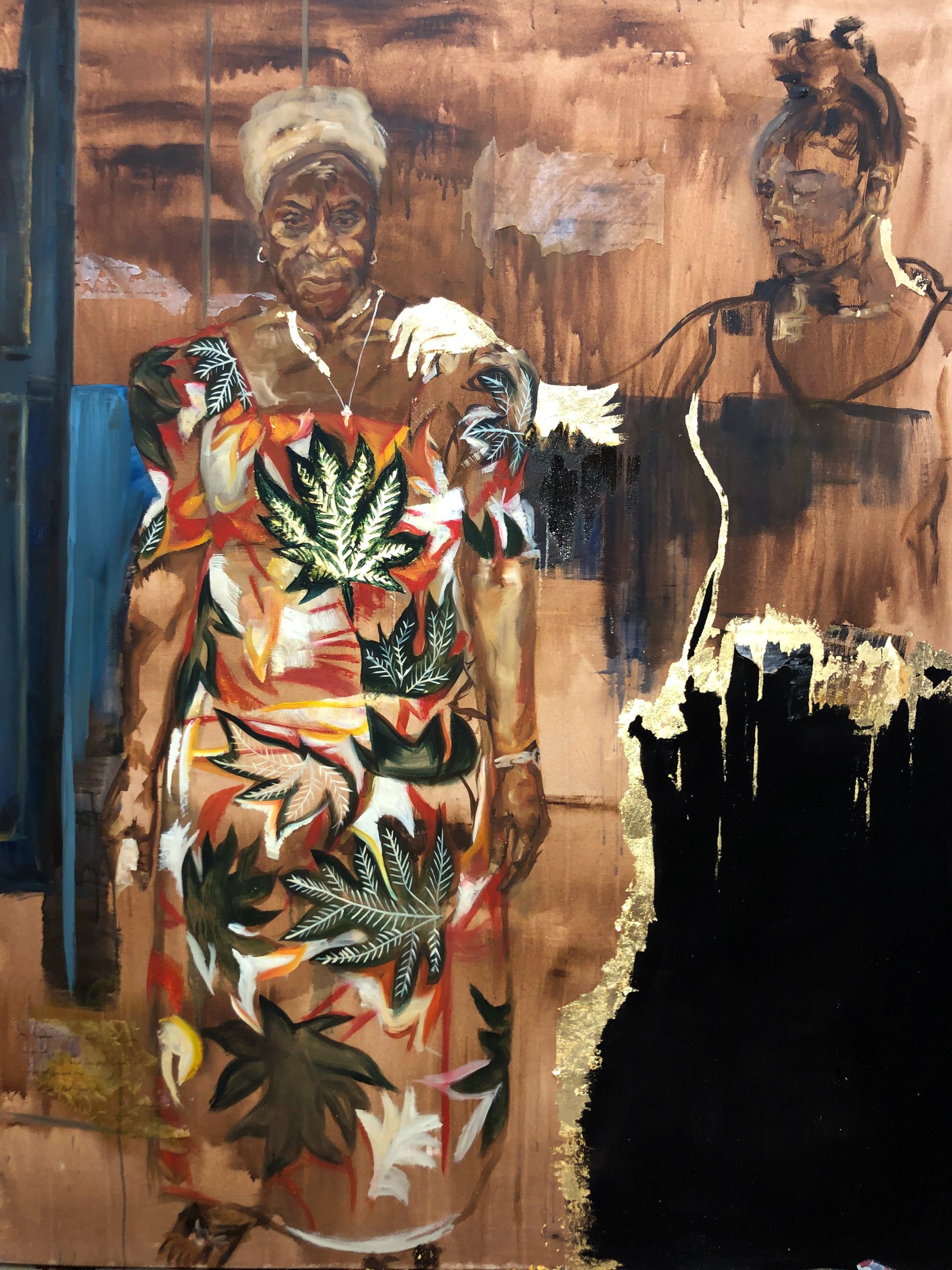
African contemporary art is rising
Mba embraces the fact that African contemporary art has become more popular in recent years, citing prominent sales by Ghanaian painter Amoako Boafo and Nigerian-born, LA-based Njideka Akunyili Crosby. But while she welcomes the influx of investment, Mba is concerned about the long term goals of the buyers, especially if their intention is just to flip art at a much higher premium than what the artist anticipates. “The good thing about [these sales] is all this attention and working with spaces like [London galleries]. But the bad thing is that a lot of collectors don’t see us long term so there’s a lot of flipping. And it’s more about how much cash we can make off them—same story of old.”
She says she’ll start to feel more confident once she sees significant growth in the local buyers market. “I feel that is when our art market will become more powerful, if not just everyone buys our work, but we buy our work ourselves.”
There are hopeful signs on this front: Sotheby’s reported in April that a significant portion of sales in its four-year-old, bi-annual Modern & Contemporary African Art auction were by African collectors.
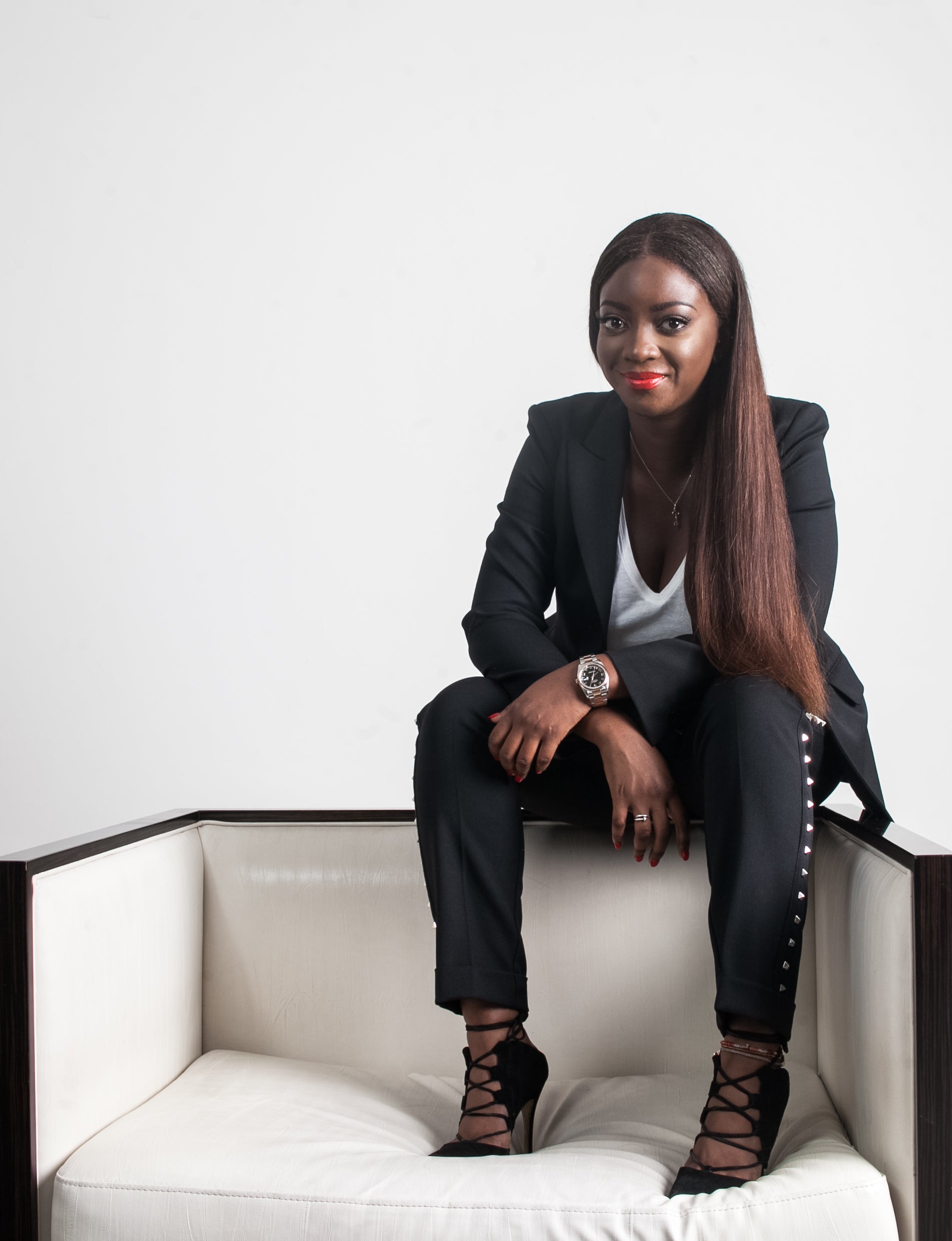
Mba’s overall hope for “Mother of Mankind” is that it will make viewing the work of young, Black female African artists an everyday affair. “This isn’t a Black show, it’s not a female show, it’s just a group exhibition. That’s what I want to see it as,” she says. “It’s not a political statement, or a racial statement either. I’ve done it because I want people to see that, yes it’s Black female artists, but they are contemporary artists. I want everyone who walks past to gasp, and see the colors, and come in.”
Sign up to the Quartz Africa Weekly Brief here for news and analysis on African business, tech, and innovation in your inbox.